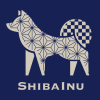
Make Japanese traditional patterns using ShibaInu!
Did you know that we have traditional and historical geometric patterns in Japan? Collectively, they are called “Wamonyo(和文様)”. “wa(和)” means Japanese and “monyo(文様)” means patterns. Every one of them is made up of beautiful geometric rules and has been giving inspiration to designers in any day and age. Also, the patterns each have a unique name which describes the features of the pattern very well.
This project “ShibaInu” turns those geometric algorithms of Wamonyo into Grasshopper components and releases them sequentially. We named the project after one of Japan's famous native breed dogs worldwide. Like how Shiba Inu is, we hope this project will be loved around the world, too. We have only got a limited number of patterns now, but we are planning for continuing updates.
Utilization:
-Make your own colored patterns (on a plane surface)
Connect the output to mesh color, for example, to color the patterns however you like.
-Create cut paths for laser cutting
Connect a ShibaInu component to ShibaInu Offset to easily make the cut paths for laser cutting.
Fun facts:
Here are some fun facts about the Wamonyo.
麻の葉:Asanoha patterns
-Asanoha patterns represent hemp leaves. Since hemp is strong and fast to grow, Asanoha patterns are often used for baby or child’s clothes wishing for them to grow healthy.
網代:Ajiro patterns
-Ajiro patterns represent fish traps, and so they are used in the hope of bringing big catches. “網:a” means fishing net and “代:jiro” means substitute, so “網代:ajiro” means “a substitute for a fishing net” which implies fish traps.
網代格子:Ajirokoushi patterns
-Ajirokoushi patterns represent baskets. As mentioned above, this pattern is a series of Ajiro patterns. Unlike Ajiro patterns, Ajirokoushi patterns cross at right angles.
網目:Amime patterns
-Amime patterns represent fishing nets, and they are also used in the hope of bringing big catches. Since you can catch many fish at once by using the fishing net, many shoguns chose this pattern as their crest wishing to achieve victory in one fell swoop.
市松:Ichimatsu patterns
-Ichimatsu patterns represent cobblestones. It was named “Ichimatsu” after the Kabuki actor, SANOGAWA Ichimatsu, who often wore a stage costume with the pattern. As the pattern continues without getting cut off, people use it wishing for continued fertility in their family and a business to expand. Ichimatsu patterns are used in the Tokyo 2020 logo, too.
鱗:Uroko patterns
-Uroko patterns represent snake scales. From how snakes shed their old skin and are born again, it contains a wish for warding off bad luck and regeneration.
籠目:Kagome patterns
-Kagome patterns represent baskets. As the pattern consists of hexagrams, it is used in the hope of warding off evil spirits.
亀甲:Kikkou patterns
-Kikkou patterns represent turtle shells. Since turtles live a long life, people often use it wishing for continued fertility.
釘抜:Kuginuki patterns
-Kuginuki patterns represent flat washers, which were used to pull out the nail a long time ago. Like how you can pull out the nail, people used it believing that it would take away their pain. It is a pun on the words kugi (nail) and ku (pain).
三崩し:Sankuzushi patterns
-Sankuzushi patterns represent counting rods. Counting rods are small bars used for calculation in ancient Japan.
七宝:Shippou patterns
-Shippou patterns represent seven treasures of Buddhism. Since this pattern is made of a series of circles, it is considered a symbol of creating a connection between people. Also, it is implying that personal relationships have the same value as the seven treasures of Buddhism.
青海波:Seigaiha patterns
-Seigaiha patterns represent waves. Like how gentle waves go on forever, it contains a wish for peace and eternity.
立涌:Tatewaku patterns
-Tatewaku patterns represent steam. From how steam rises, people use it in the hope of raising a fortune.
分銅繋ぎ:Bundoutsunagi patterns
-Bundoutsunagi patterns represent counterweights. Gold and silver were cast and saved in the shape of counterweights, so Bundoutsunagi patterns are considered as a symbol of wealth.
矢絣:Yagasuri patterns
-Yagasuri patterns represent arrows. Since an arrow will not come back after shooting it, people used to have their bride take a Kimono with Yagasuri patterns so that she would not get a divorce and return home.
ShibaInu Changelog:
May 23, 2021 - ShibaInu V1.00
-First release. We have 10 patterns available.
Oct 14, 2021 -ShibaInu V2.00
-Second release. 5 new patterns and “ShibaInu Offset” components are added. ShibaInu Offset is a supporting component for ShibaInu, which we created this time. Just by connecting the ShibaInu component to ShibaInu Offset, you can get the offset curves of the patterns with no difficulty. Also, we added a parameter “n” for Ajirokoushi and Seigaiha. The parameter “n” is a number of elements creating a basic figure for each pattern. Fixed bugs when less than 0 are entered in U and V.
Credits:
Created by TAKAGI SHUTA OFFICE LLC.
Director - TAKAGI Shuta
Programmer - ISHIBASHI Yuta, TAGAWA Naoki, HAYAKAWA Haruna, KAWANISHI Aiko, HAYASHI Hira
Designer - TAKEUCHI Runa
- Category:
- License Type:
Grasshopper for Rhino 7 for Win
Grasshopper for Rhino 6 Mac
Grasshopper for Rhino 7 Mac
Grasshopper for Rhino 7 for Win
Grasshopper for Rhino 6 Mac
Grasshopper for Rhino 7 Mac













